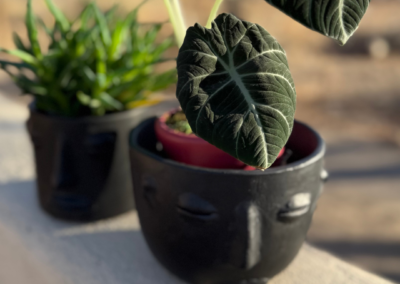Clay Pottery / Barro
Mexican clay pottery, or barro, reflects the rich cultural heritage and artisanal traditions of each region. From Puebla, Talavera is known for its fine ceramic quality and vibrant, detailed designs, with authentic styles like Talavera de la Reyna and Dolores Hidalgo. In Oaxaca, Barro Negro stands out for its polished black sheen and carved details, created through a unique firing method. Barro Bruñido, found in Michoacán and Jalisco, features a smooth, glossy finish and warm, earthy tones. Barro Rojo, common in Oaxaca and Puebla, uses red-toned clay for everyday items like cooking pots and planters. Tonalá pottery from Jalisco includes Barro Betus, with a shiny surface, and Barro Petatillo, recognized for its fine cross-hatching and folkloric imagery. In Metepec, Barro Policromado showcases vibrant, hand-painted works, most famously the Arboles de la Vida (Tree of Life sculptures). From the highlands of Michoacán, Zipiajo pottery by Purépecha artisans is shaped without a wheel and fired in open-air kilns, often featuring floral and animal motifs in earthy tones using natural pigments. In Atzompa, Oaxaca, pottery is coiled and hand-shaped, with traditional geometric and floral hand-painted designs. Each handmade piece carries the heart, history, and creativity of the community it comes from.














